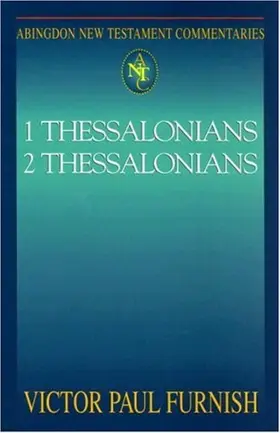

1 Thessalonians, 2 Thessalonians
in Abingdon New Testament Commentaries
Pages
204 pages
Publisher
Abingdon Press
Published
8/1/2007
ISBN-13
9780687057436
Accepting the widespread view that 1 Thessalonians is the earliest surviving Pauline letter, Furnish commends reading it as fully as possible on its own terms, without presupposing or imposing themes or positions that are explicit only in letters of a later date. While he agrees with commentators who note this letter's pastoral aims and character, he is more convinced than some that it also exhibits a rich and coherent theological point of view. Furnish interprets 2 Thessalonians as the work of an anonymous Paulinist writing several decades after the apostle's death. He regards this letter, too, as historically and theologically valuable, although less for what it discloses about Paul's ministry and thought than for what it shows about the reception and interpretation of Paul in the late first-century church.
Collections
This book appears in the following featured collections.
- New Testament Commentaries & Monographs by Princeton Theological Seminary
Reviews
Nashville: Abingdon, 2007. Pp. 204. Paper. $20.00. ISBN 0687057434. Eduard Verhoef Maartensdyk, The Netherlands In 2007 Victor Paul Furnish published a commentary on both epistles to the Thessalonians in the Abingdon New Testament Commentaries series. As this series is meant especially for theological students, the authors of these commentaries do not “engage in technical academic debate” (11). This intention is restrictive ,of course, but it is at the same time the strength of these commentaries. The authors are to write a short and clear commentary on the New Testament writings. It is quite an achievement that the Furnish managed to write a lucid and rather complete commentary on both these epistles within 204 pages. Further, in spite of the rather limited number of pages, Furnish discusses several topics that are often lacking in commentaries. For example, in the introduction on 1 Thessalonians the question is considered whether the colleagues Timothy and Silvanus played some role in the writing of the letter. Rightly, in my view, Furnish states that they did not (24, 30–31). Another example Furnish gives of an often-missed topic is a paragraph about the cult of Cabirus (27) in a chapter about the city of Thessalonica. It is probably due to the restrictions of this series that no English translation is given in the commentary.
[Full Review]

